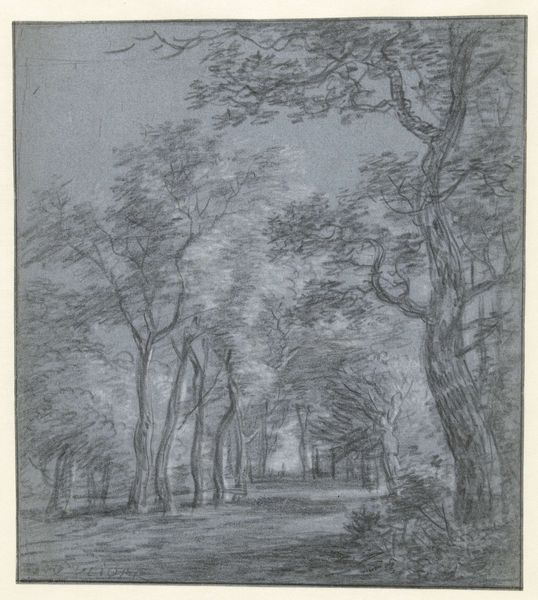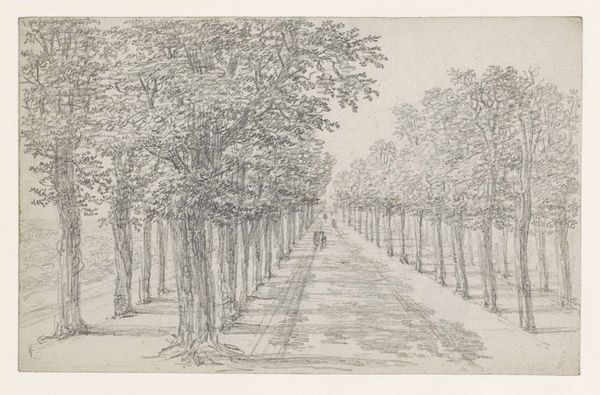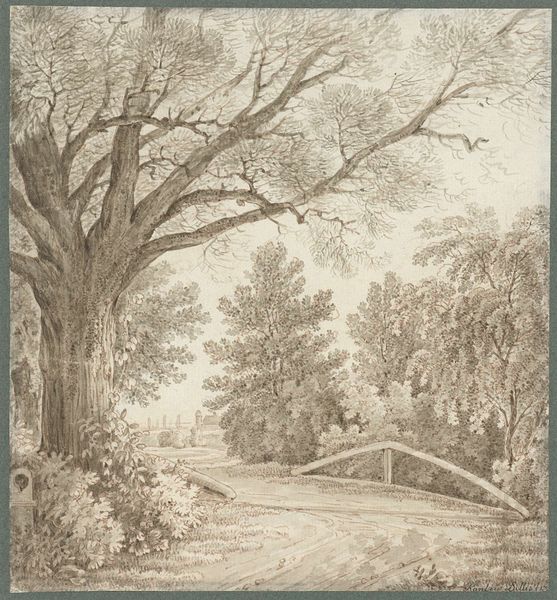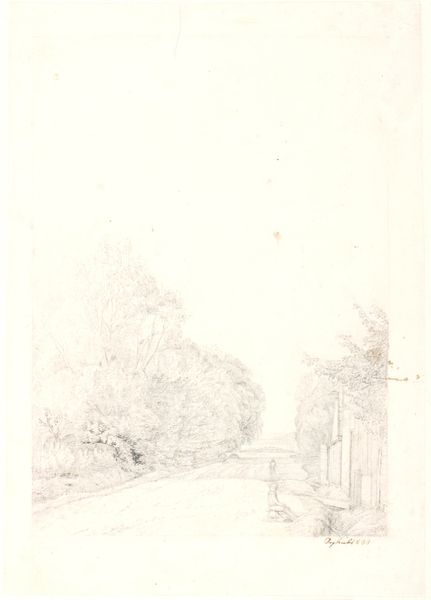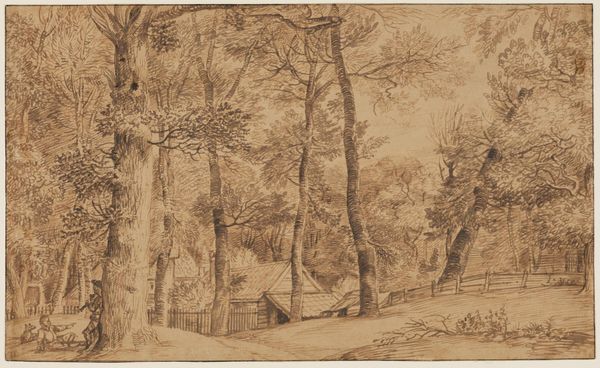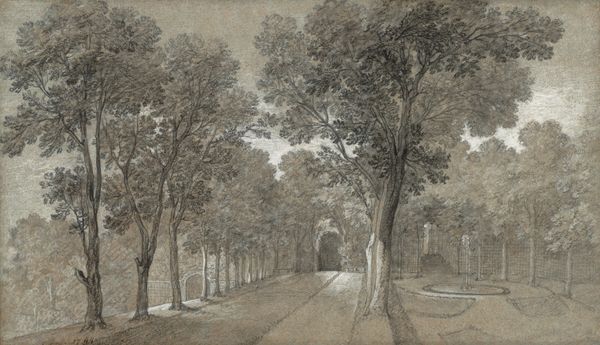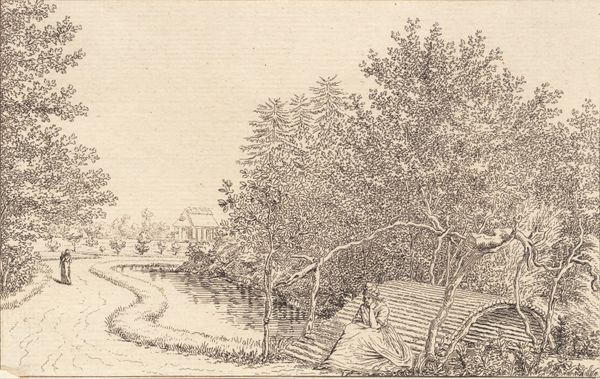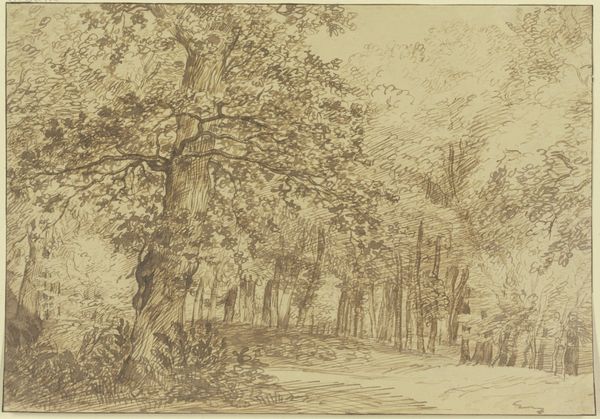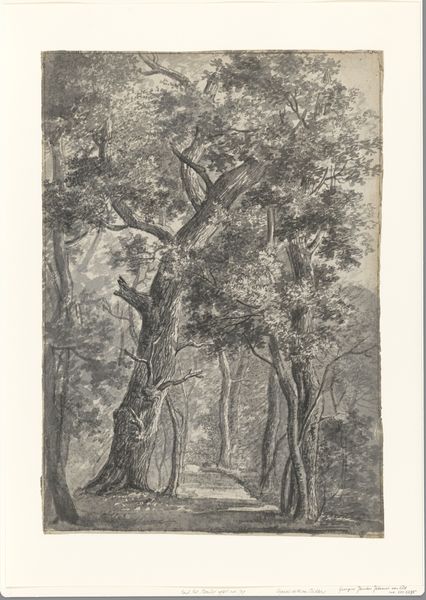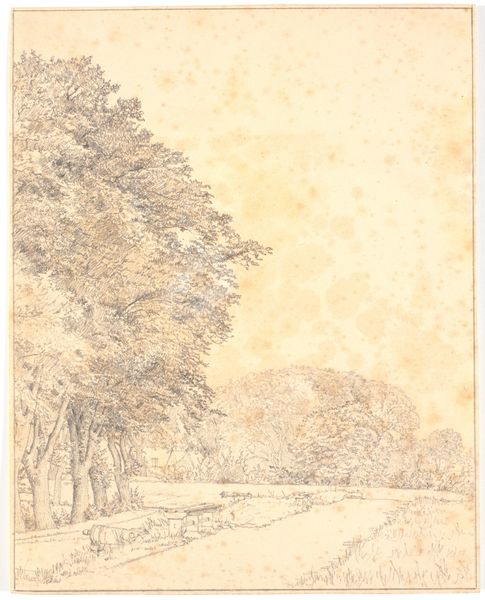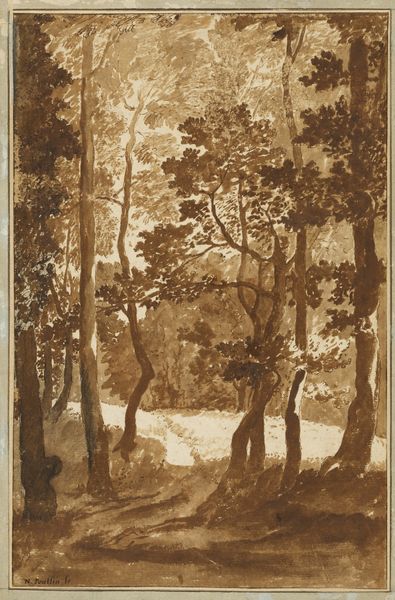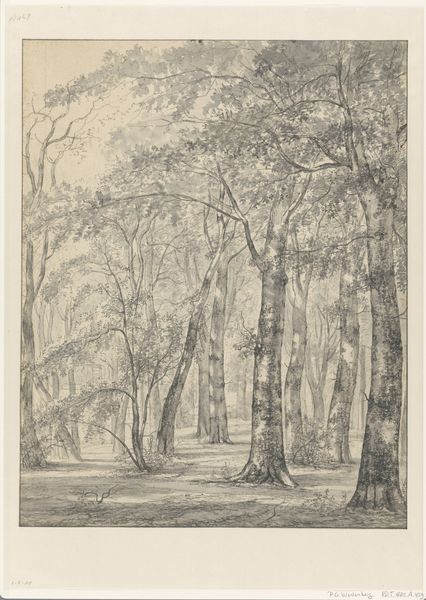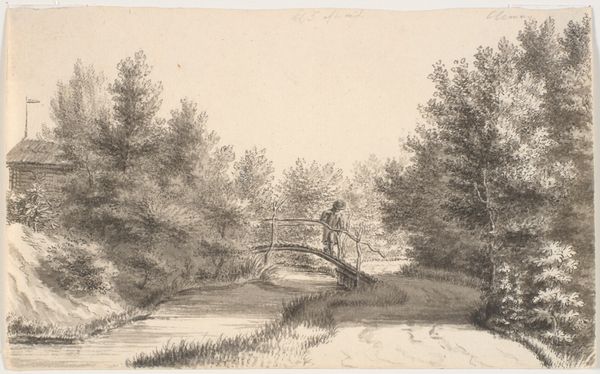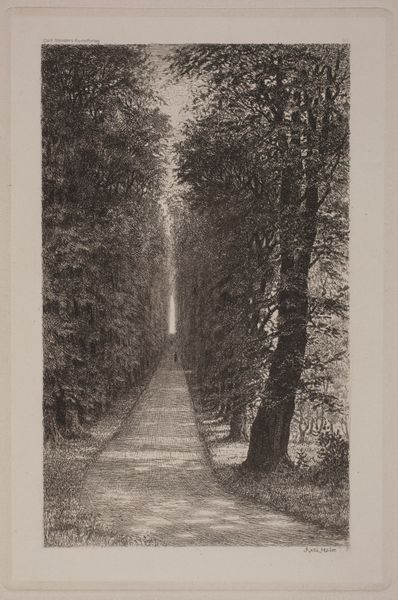
Copyright: Public Domain
Editor: Here we have "Am Schlangenstein im Park zu Weimar," a pencil drawing by Georg Melchior Kraus, created sometime between 1780 and 1784. The soft focus gives the drawing a dreamy, almost ethereal quality. What strikes me most is the symbolism of the snake wrapped around the stone. How do you interpret this work, especially considering its historical context? Curator: This drawing invites us to consider the layers of meaning embedded in 18th-century gardens and their monuments. The snake, often a symbol of knowledge and transformation, intertwines with the stone, perhaps alluding to hidden wisdom within the natural world. Weimar at this time was a cultural hub, a meeting place for intellectuals and artists grappling with new ideas about nature, reason, and individual expression. Given this context, what social and philosophical currents do you think Kraus might be engaging with through this imagery? Editor: I suppose it points to the enlightenment ideas blending with this nascent Romantic sensibility… the idea that knowledge isn’t just rational, but can be found in nature, maybe? That feels like a very "period" idea, especially thinking about the garden setting and the interest in the Classics at that time, too. Curator: Exactly! Think about the Enlightenment emphasis on reason alongside the burgeoning Romantic movement's celebration of emotion and intuition. The garden becomes a space not just for aesthetic pleasure, but also for philosophical contemplation, and, dare I say, the potential for radical societal reflection through those philosophies. The drawing captures that tension. And I'd also add a sense of exclusion based on the class involved in owning gardens such as these. Do you think this garden is an egalitarian setting, one open to all? Editor: Probably not, and I hadn't thought about it in those terms! Thanks for that, it gives me a totally new framework. I’ll definitely remember that context going forward. Curator: That tension, the invitation to seek wisdom within nature while also acknowledging power dynamics and social divides, makes Kraus's drawing deeply relevant to contemporary conversations, doesn't it? It speaks to how we navigate nature and culture now.
Comments
No comments
Be the first to comment and join the conversation on the ultimate creative platform.
